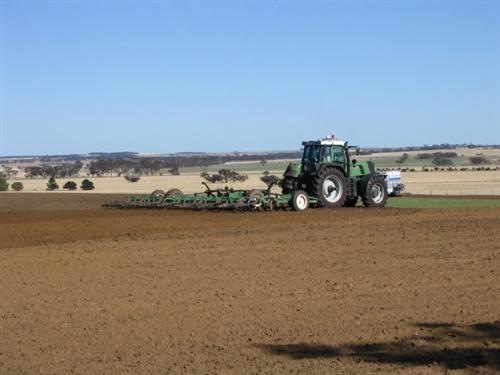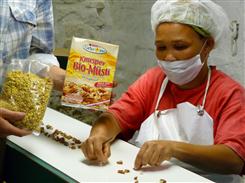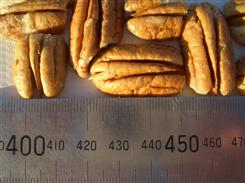The agricultural sector is the largest consumer of water in the Orange-Senqu River basin, a water scarce region. Virtual water trading could potentially be very useful, resulting in huge water savings. Much of the water saved locally could be reallocated to other uses and to environmental flows. However, while this approach may save significant quantities of water, considerable negative economic effects could be felt throughout the agricultural sector in South Africa.
The current mismatch between water availability and demand in the basin countries, food shortages, and more frequent and intense droughts associated with climate change, highlight the need to implement water-saving technologies and management options. Water transfers and virtual water trade in each of the basin countries are summarised below.

Water saving technologies in agriculture could result in large savings in the Orange-Senqu River basin overall.
Source:Ian Bailey 2006
( click to enlarge )
Botswana
Of all of the states in SADC, Botswana relies the most on virtual water imports. The food supply per person has increased steadily since the late 1970s and is forecasted to grow further (Hoekstra and Hung 2002). In 1998, Botswana exported 16% of its water and imported 61% of its water supply as virtual water (Lange and Hassan 2006).
Lesotho
Lesotho is considered an "impacted country" because of its poor soil quality and relatively limited potential to expand future grain production (Earle and Turton 2003). The first stage of the Lesotho Highlands Water Project provides 500 Mm3 of water to South Africa annually, and generates an income of US$ 1,5 million per month. Because this scheme is gravity-fed, it is considered cost effective over the long-run. This is the only large inter-state transfer scheme in SADC because of the political implications of having a foreign state control export earnings.
Namibia
On a per capita, per annum basis, Namibia has three times more water than France. However, high rates of evapotranspiration create soil salinisation and reduce the soil water available to grow grain (Earle and Turton 2003). The Grootfontein-Omataka canal (transfering water from the Okavango Delta in Botswana), is inefficient, losing approximately 70% to evaporation. Namibia imports (as grain) as much virtual water as Botswana; however Namibia also exports virtual water to the EU, as cattle. In 1998, Namibia exported 29% of its water and imported 63% through virtual water (Lange and Hassan 2006).
South Africa
South Africa was the 27th largest virtual water importer in the world in 1995–1999, importing a net 21 800 Mm3 over this period (Hoekstra and Hung 2002). Imported water allows this state to act as a major grain exporter in the SADC region, and in recent years it has diversified, increasing production of high-value agricultural products including fruit, flowers, nuts and organic vegetables for international markets (Earle and Turton 2003). In 1998, South Africa exported 24% of its water and imported 12% as virtual water (Lange and Hassan 2006).
Table: Virtual water transactions in Orange-Senqu River basin states, by trade by country. (no data for Lesotho) 1998 (million m³)
|
Exports
|
|
Destination
|
Botswana to
|
Namibia to
|
South Africa to
|
|
Botswana
|
—
|
<1
|
38
|
|
Namibia
|
<1
|
—
|
123
|
|
South Africa
|
4
|
45
|
—
|
|
Rest of the World
|
20
|
40
|
3 434
|
|
Total
|
23
|
85
|
3 595
|
|
|
|
|
|
|
Imports
|
|
Origin
|
Botswana from
|
Namibia from
|
South Africa from
|
|
Botswana
|
—
|
<1
|
4
|
|
Namibia
|
<1
|
—
|
45
|
|
South Africa
|
38
|
123
|
—
|
|
Rest of the World
|
53
|
62
|
1 771
|
|
Total
|
91
|
185
|
1 816
|
|
|
|
|
|
|
Net Import
|
68
|
100
|
–1 779
|
Source: Lange and Hassan 2006
 Nuts are a high value crop, produced in increasingly large volumes in South Africa. Source:Roux Pecan 2009 ( click to enlarge ) |
 High grade Pecans. Source:Roux Pecan 2009 ( click to enlarge ) |
